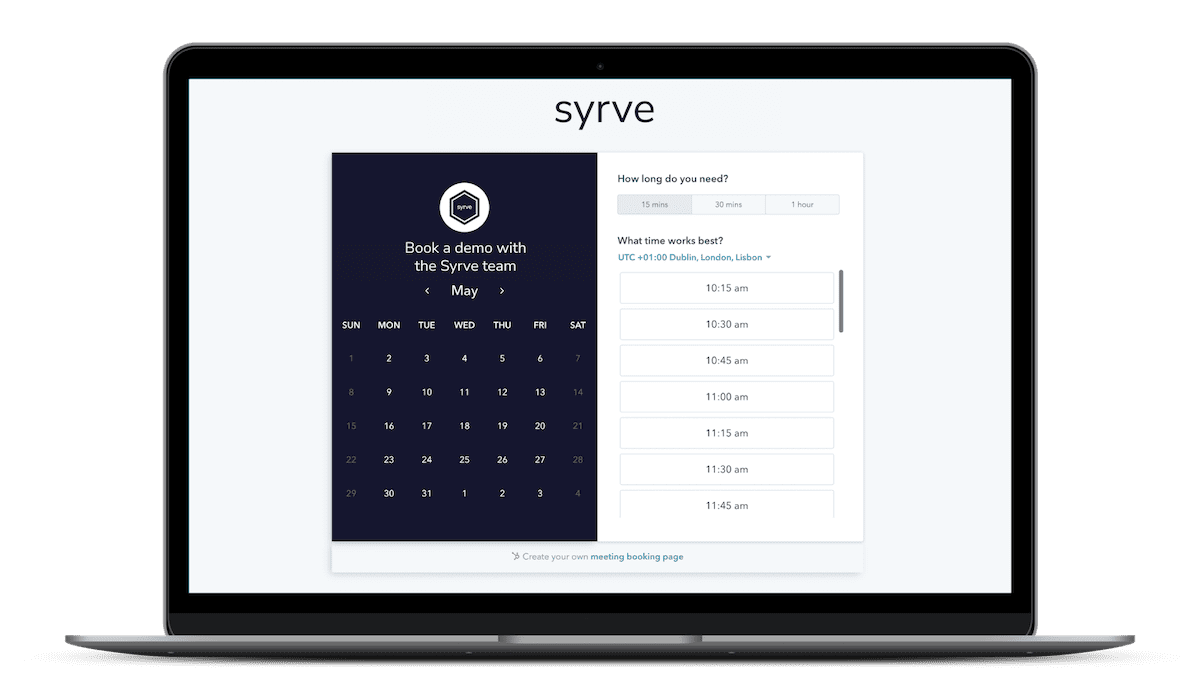2024 was a trying year for the restaurant industry. Rising food prices, soaring energy costs, and increased labour expenses, set against a backdrop of heightened consumer expectations, presented significant challenges across the sector. And 2025 isn’t going to be any different. Here’s our take on the trends that look set to shape the industry over the coming year, as well as the technologies that will gain even more prominence.
1. Self-Service Kiosks Proliferate…Big Time
Self-service kiosks look poised to revolutionise the F&B sector in 2025. Predominantly used by QSRs, you can expect these ordering platforms to become far more widespread, with some even predicting their use in full-service establishments.
With the ability to automate the entire ordering process from placement to payment, self-service kiosks allow operators to reduce/reallocate front-of-house staff. In an industry where efficient human resourcing has become so critical, this is obviously going to be of great appeal in 2025 and beyond.
.png?width=636&height=424&name=incontent5(1).png)
2. Tech-Driven Forecasting Takes on Even Greater Meaning
Accurate forecasting is going to be front and centre - manual approaches will no longer be enough. The challenges of seasonality, consumer fickleness and sales volatility will continue to pose challenges. But in 2025, they’ll be intensified by unpredictable demand variables arising from remote ordering.
Also keep in mind the emergence of weight loss drugs. We’ve yet to see the true impact of these on the restaurant industry. Regardless, staying ahead in 2025 will require the use of fully-integrated management systems that go deep on data analysis and deliver reliable forecasting. AI and machine-learning will be the terms to look out for.
3. High Food Costs Necessitate Real-Time Inventory Control
While food inflation does seem to be easing in some markets, prices remain very high thus presenting restaurant owners with plenty to think about in 2025. For many operators, the first step will be to scrutinise their inventory management processes to identify inefficiencies. Given that poor stock monitoring is one of the more expensive operational malpractices, real-time inventory control is going to be highly attractive to cash-strapped owners.
.png?width=626&height=417&name=incontent3(1).png)
4. Off-Premises Dining Reaches New Heights
With revenue projected to be in excess of $1.4 trillion by 2027, the surging popularity of remote ordering will continue unabated over the course of 2025. Yet if we put aside fanciful concepts such as automated drone delivery, the fact is that in 2025, off-premises dining will require the same kind of tech that it did five years ago.
Namely, a fully-responsive website that works well on smaller devices and/or a mobile-friendly app. As a result, there’ll be a greater demand for restaurant management systems that offer e-commerce tools and third-party delivery integration options.
5. Table Ordering Continues to Rise in Popularity
On the subject of QR code menus, it’s worth paying attention to the rising popularity of table ordering. Quick response code menus are central to this upcoming trend and they can already be found in a number of established restaurant/QSR chains such as Nando’s and Pizza Hut. Although their use isn’t widespread as of yet, their time-saving potential for both customers and servers should see their proliferation.
.png?width=636&height=424&name=incontent1(1).png)
6. Hyper Personalisation Demands Better Methods of Data Analysis
It’s becoming painfully apparent for operators that basic restaurant management systems fall well short when it comes to supporting hyper-personalisation strategies. Data collection is one of the main issues, with many platforms incapable of collecting anything but the most basic customer analytics.
So, the push for tailored dining will compel operators to seek out tech systems that provide comprehensive data that includes metrics on order frequency, order timing, special preferences, ordering habits and loyalty data.
7. Hyper Personalisation Drives Further Tech Innovation
In addition to data collation, the methods of actually delivering personalised dining experiences will continue to evolve. Currently, the most advanced tech stacks typically include integrated loyalty programs, digital outreach tools and menu customisation to aid with implementation.
And more innovations are already being rolled out, among them, dynamic menus that adjust according to diner preferences, gamified loyalty programs and AI chatbots that automatically offer personalised dishes. This is major growth area in hospitality so you should see plenty of movement in 2025.
.png?width=636&height=424&name=incontent2(1).png)
8. Operators Diversify Their Payment Options
Contactless card payments and mobile wallets are already commonplace throughout the F&B industry. With the potential to turn tables faster, you can take it to the bank that restaurants will continue diversifying the way they process transactions – the gradual introduction of QR code payments is a prime example.
It’s a simple, fast process that frees up servers and is proven to speed up table turnover – up to 15% according to one survey. Presently, a lot of operators include QR code menus without the option to pay. This should change in the coming year.
9. High Labour Costs Mandate Better Staff Scheduling Tools
With living wage increases and high labour expenses, eliminating over-staffing is going to be a top priority in 2025. This will likely see the more widespread adoption of next-gen systems that use predictive analytics to deliver dynamic scheduling tools. Not only do these allow managers to view the financial impact of staffing allocation in real time – they also assist in building rotas to address the unpredictable peaks and troughs of customer demand. This will be of enormous benefit in 2025.
.jpg?width=636&height=424&name=restaurant-tech(1).jpg)
10. ‘All-in-One’ Tech Stacks Become More Widespread
The need for integrated tech solutions that offer broad operational coverage, will become even more pressing. For an industry where pressure is applied from all angles, disparate, fragmented systems are no longer sustainable. Instead, tech stacks that seamlessly integrate ordering, inventory management, kitchen production and back-of-house management are fast becoming a baseline requirement.
Final Thoughts
There’s little indication that industry pressures are going to ease in 2025. But there’s good reason for optimism. The drive for innovation within hospitality is unveiling powerful tools that offer genuine solutions to the many problems facing operators. Those that leverage them will be ideally-placed to navigate the complexities that lie ahead.



